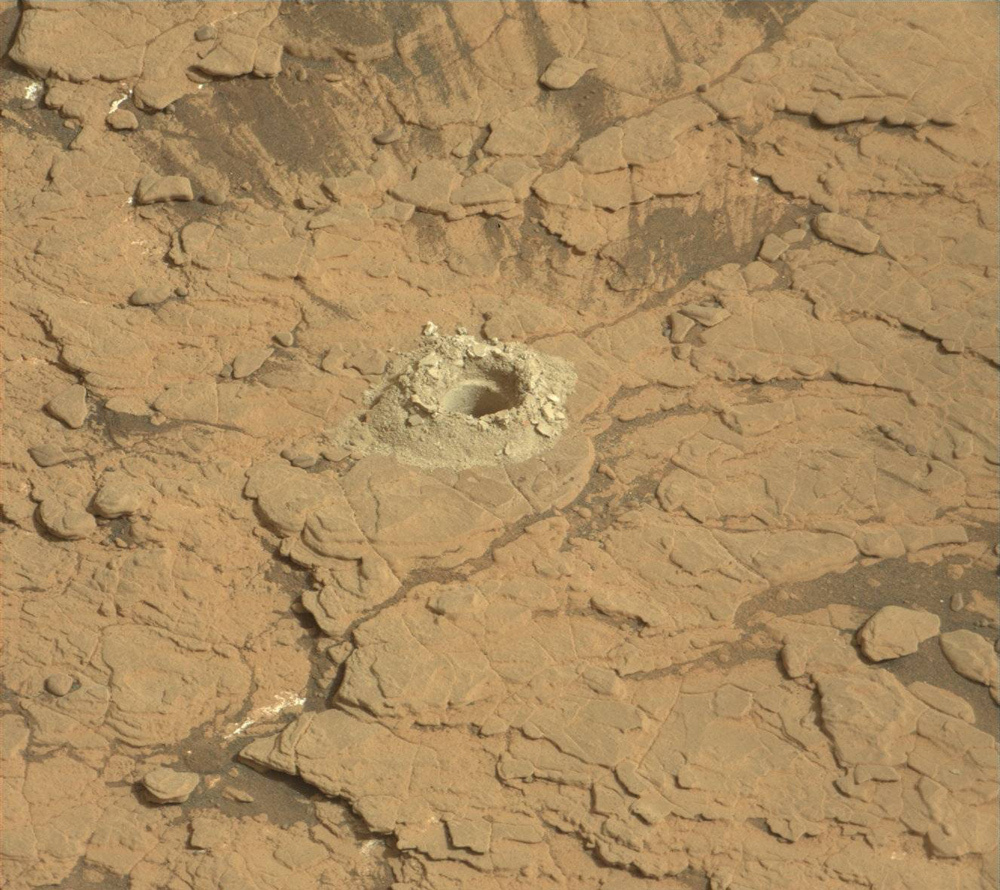2 min read

The end of July has been exciting for Mars and us Martians, with the successful launch of the Perseverance rover and Curiosity drilling her 27th drill hole on the “Mary Anning” target! At the start of planning, we were greeted by the always welcome sight of a drill hole surrounded by a pile of drill tailings (see image above). We learned from the engineering data that the drill cut through the rock like butter, mostly using the rotary-only mode with only low levels of percussion needed towards the end. It’s fascinating how just the act of drilling can tell you a lot about the rock composition before a sample is even fed to CheMin. The ease of drilling, plus the clumpy nature of the drill tailings, hints that the Mary Anning rock is fine-grained and potentially clay-bearing. Still, we need CheMin analyses to confirm the rock’s mineralogy so we are eagerly anticipating those results next week!
To continue our drilling checklist, Friday’s three-sol plan focused on portion characterization of Mary Anning. This step will drop some of the drilled powder onto the ground so that we can image the drilled sample and ensure that it is good to deliver to CheMin and SAM. We also planned ChemCam chemical measurements of the drill hole to document rock chemistry at depth. Mastcam multispectral and ChemCam passive observations on the drill tailings will also give us a complementary spectral assessment of the drilled mineralogy.
Multiple other observations rounded out the packed weekend plan. ChemCam will measure three bedrock targets, “Geikie,” “Fearns,” and “Great Trossachs,” some containing dark spots that may account for the variable chemistry we have been observing lately. Mastcam will also be taking two large mosaics to fill out our workspace imaging and image a long, prominent outcrop of the fractured intermediate unit in the clay-bearing unit. We also planned a MARDI image to continue change detection observations, which are focused on imaging the same location over time to observe grain movement due to winds. Atmospheric conditions will also be monitored with various atmospheric observations, dust devil surveys, and a SAM atmospheric measurement using the Quadrupole Mass Spectrometer (QMS) and Tunable Laser Spectrometer (TLS).
Written by Vivian Sun, Planetary Geologist at NASA's Jet Propulsion Laboratory







